The Galapagos Islands are home to some of the most incredible animals in the world, many of which can only be found in a few islands of the archipelago. There’s a reason why Darwin labeled them “The Enchanted Isles”; besides helping him draft his theories on “The Origin of Species”, Darwin was also fascinated by the enormous diversity and remarkable quirkiness of the local wildlife.
TALK TO A DESTINATION EXPERT

Diego Zapata

Rosa Mena

Sandy Lara

Diego Zapata

Rosa Mena

Sandy Lara
Many Galapagos animals might seem strange, even illogical; this is because they have evolved adaptations specific to the volcanic landscapes they inhabit and the relatively scarce amount of food availability on land. A visit to the Galapagos Islands is, if anything, a visit to one of the world’s most exotic and intriguing zoos. Prepare to encounter species unlike any you’ve ever seen before and continuously learn everything about all kinds of local animals throughout your stay (click here to learn more about the Galapagos Big15 animals!)
We’ve selected 6 amazingly quirky animals for the Galapagos to showcase the spectacular diversity of the islands. Take this opportunity to learn more about them – you’ll have a leg up during your trip!
Blue-Footed Boobies
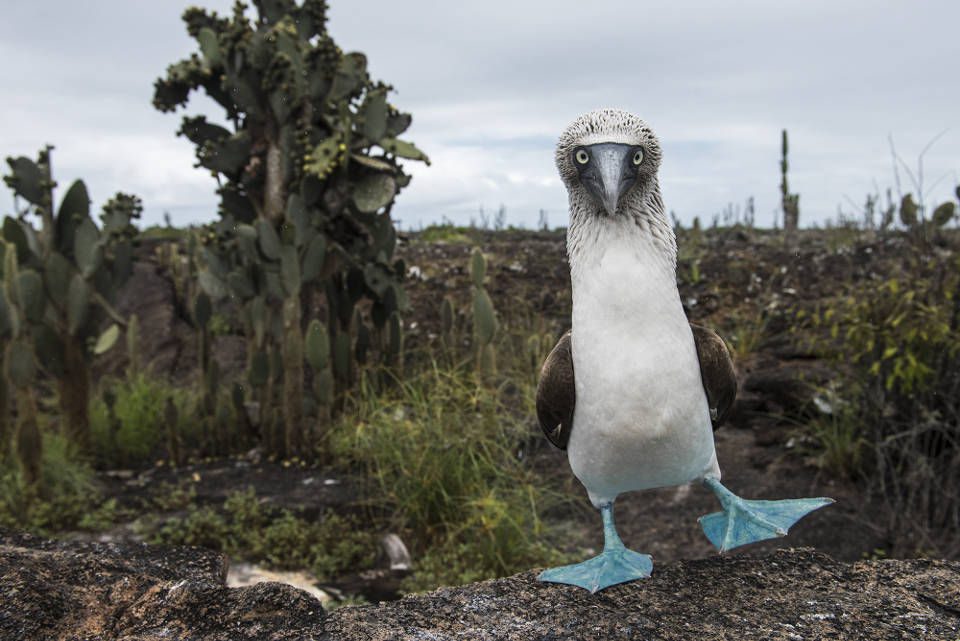
These peculiar birds are most easily recognizable thanks to their bright blue webbed feet. Although not unique to the Galapagos Islands, the largest breeding colony of these birds can be found inside the Ecuadorian archipelago. These unique birds acquired their unusual name due to their clumsy way of walking; the word “boobie” comes from the Spanish word “bobo,” which means foolish, dumb, or uniquely clumsy. In Spanish, however, boobies are called “piqueros,” a direct translation of the word “diver;” this is due to the fact that boobies are uniquely adept at diving into the depths of the ocean while searching for prey.
During your stay in the islands, you will almost certainly encounter Blue-Footed Booby breeding grounds. These birds are particularly fearless, meaning you will be able to look at them from up close (and even incur their ireful yelps if you get too close to their nest.)
Galapagos Tortoises
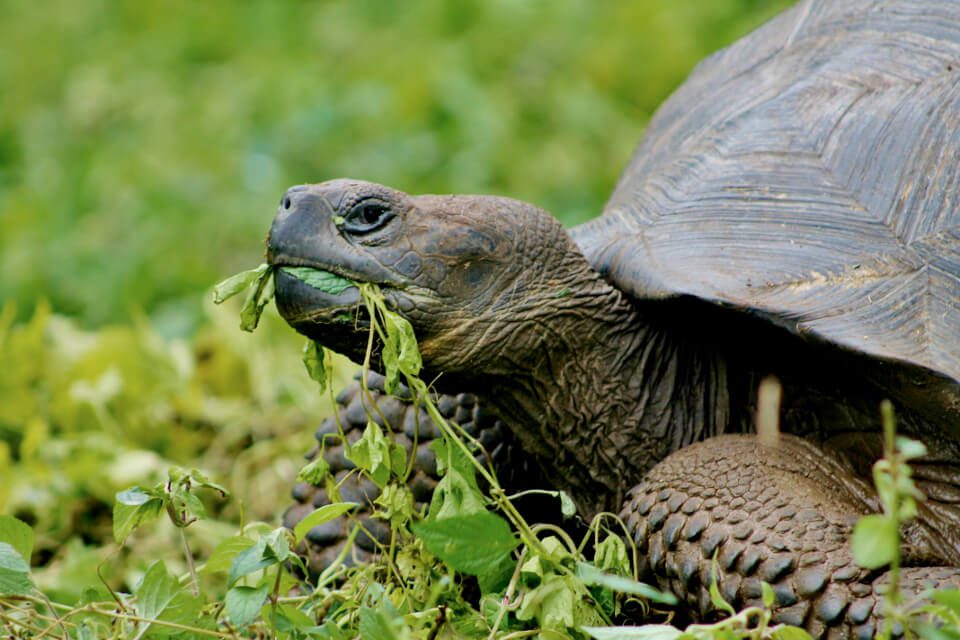
The Galapagos Tortoise is, by all means, the most symbolic of all Galapagos animals (thanks, mainly, to the famed Lonesome George). These enormous, slow-moving reptiles inhabit the islands of Santa Cruz, Isabela, and San Cristóbal, and their history is deeply tied to that of the lands they inhabit. The shape of the tortoise’s’ shell varies from island to island, a distinction that modern biologists have associated to the phenomenon of natural selection.
Galapagos Tortoises were historically used by pirate ships as large food sources, given that they can stay alive with no food or water for months at a time; this allowed pirates to store the tortoises in their ship’s cargo holds during long voyages at sea. This cruel treatment of the tortoises obviously no longer occurs as they are a protected species and highly valued by both the local population and visiting tourists.
Marine Iguana
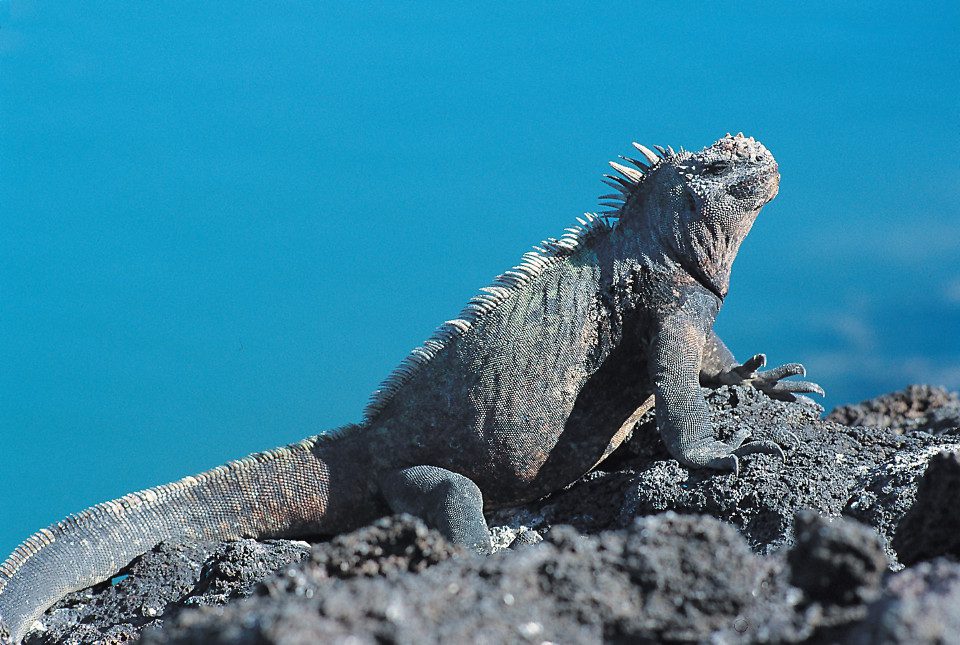
The Galapagos Marine Iguana is unique among modern lizards in that it forages (searches for food) inside the ocean. These iguanas are characteristically rather ugly; Darwin himself referred to them as “imps of darkness.” This is due to the fact that the Galapagos Marine Iguana has adapted itself to the porous volcanic landscape of the archipelago; its dark skin allows it to thermoregulate their inner temperatures more quickly after getting out of the ocean.
You will most likely see them while getting on or off your boat as you move from island to island, swimming past the rocks on the shore in search for the algae that it eats for sustenance. These incredible reptiles are unique to the Galapagos Islands so pay close attention during your visit!
Magnificent Frigatebird
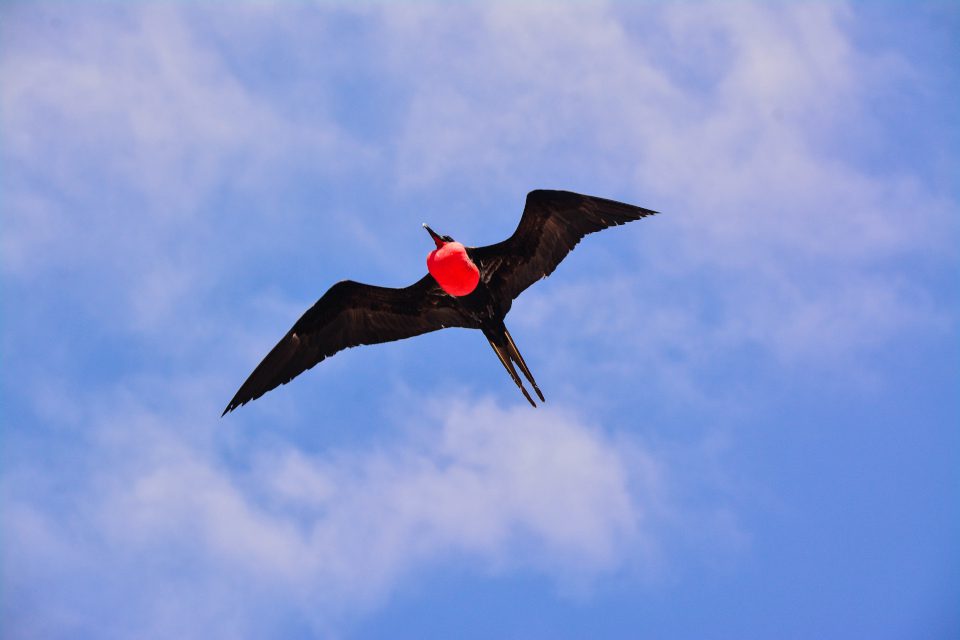
Magnificent Frigatebirds are exactly what their names entail: magnificent Galapagos animals. Males of this species are a simply spectacular sight, whether you encounter them flying overhead or perched on a tree with the rest of their brood; their blown-up, glistening red chests can be seen from very far away, after all. These birds only inflate their bright red throat pouches during breeding season to attract females, so if you happen to be in the Galapagos at this time, make sure to keep your eyes open for flying jets of red above you! You might also be lucky enough the encounter Magnificent Frigatebird nests while on land.
Quick-Fact: Did you know that Magnificent Frigatebirds are the bullies of the Galapagos Islands? These unique Galapagos animals feed almost exclusively from fish they stole from Blue-Footed Boobies mid-flight.
Flightless Cormorant
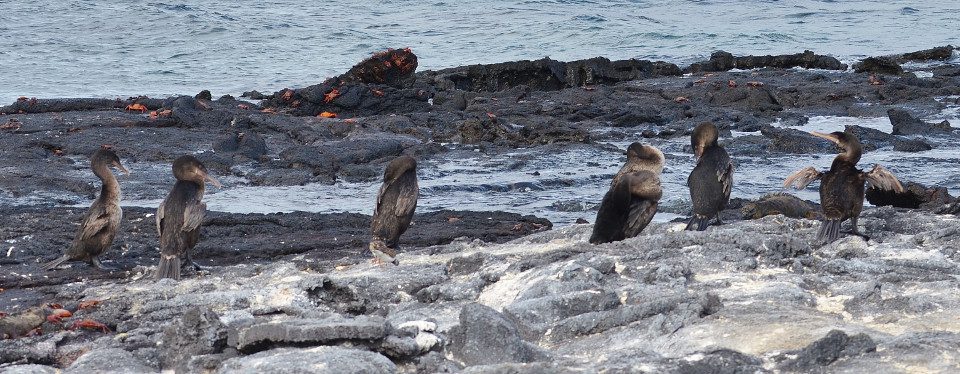
“Awww…” is the most likely reaction you’ll experience when encountering this quirky little bird. The Flightless Cormorant, indeed, can’t fly – in fact, it is the only cormorant that lacks this key ability. The Flightless Cormorant’s wings are small and fragile, and it really isn’t all that skilled at walking around either. However, this bird is a really good swimmer; it’s webbed feet allow it to swim quickly after prey and find its way back to its nesting grounds on the rocks.
Unlike Blue-Footed Boobies or Albatrosses, this cormorant’s feathers aren’t waterproof, meaning that it spends a large chunk of its day drying itself off on the shore. This most peculiar of Galapagos animals only inhabits the islands of Fernandina and Isabela, so if your tour happens to travel through these islands, make sure to ask if you can visit this unique animals’ nesting grounds!
Galapagos Penguin
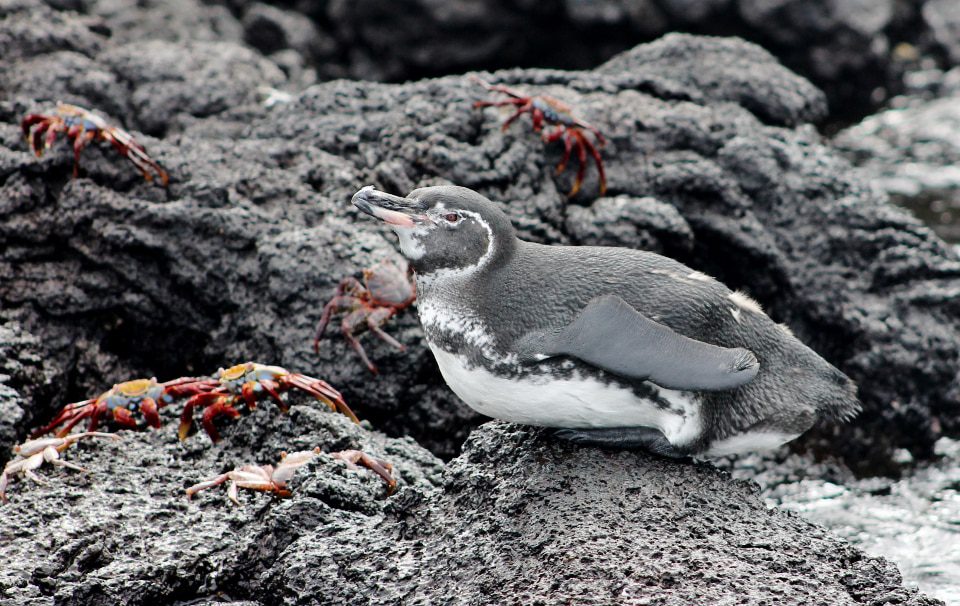
Penguins in the Galapagos? Sir yes sir! The Galapagos Penguin is the only penguin in the world that lives in the Northern Hemisphere. It manages to do so thanks to several cold tides that wash past the Galapagos Islands, allowing the penguins to deep into the cold currents when they seek refreshment. Other than that, these unique penguins enjoy spending their time on shore and taking care of their nests. They usually inhabit rocky areas; here, they stash their eggs in crevasses to ensure they’re protected from the sun and roaming predators. Like all penguin, the Galapagos Penguins are amazing swimmers – if you’re lucky, you might just be able to swim with one (or encounter many more sea creatures while snorkeling)!
If you’re curious to learn more about what this fantastic destination has to offer, then be sure to check out our Galapagos Information page.

Javier Garcia

Eduardo Silva

Carolina Escobar
START PLANNING YOUR TRIP

Javier Garcia

Eduardo Silva

Carolina Escobar
Get in touch for more
CONTACT US

